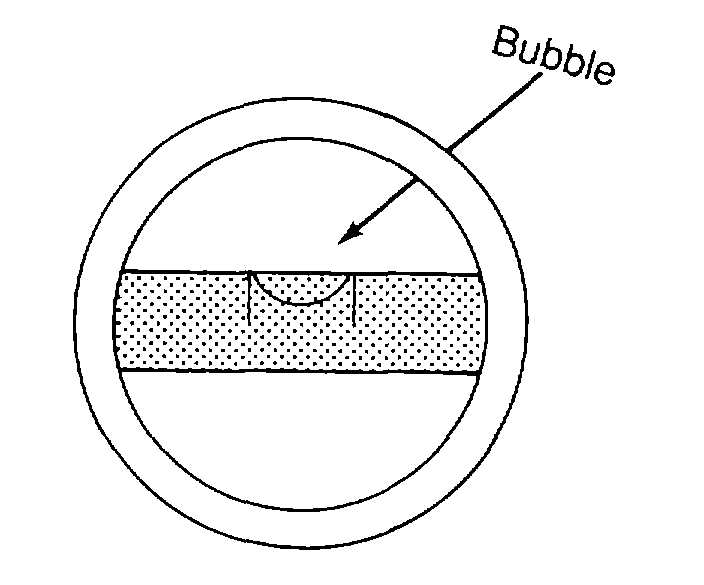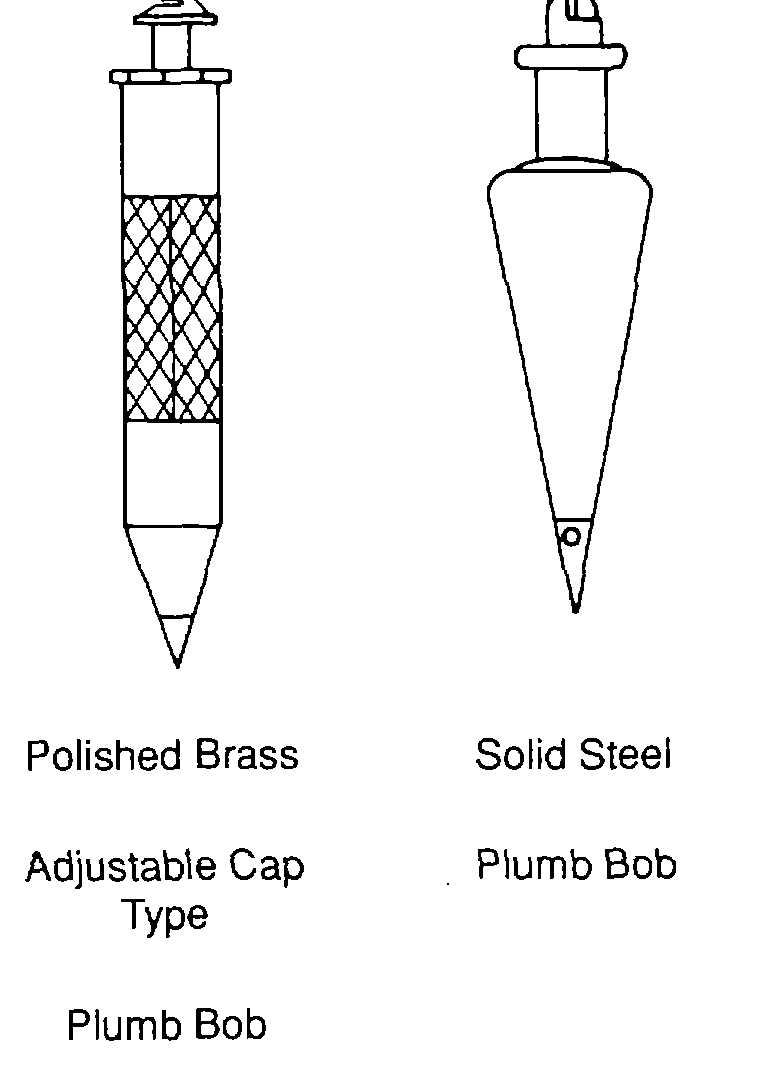TM 1-1500-204-23-9
(4)
Mechanic's level
The mechanic's level,
shown in figure 3-4, has 3 vials which are mounted
horizontally, vertically, and diagonally.
Figure 3-4. Mechanic's Level
b. Use. To use a level, simply place it on the
surface to be checked. Inspect the vial which is nearest
to the horizontal. If the surface is level, the bubble will be
situated between the two etched lines on the vial. A level
condition is shown in figure 3-5.
Figure 3-5. Level Condition
c. Care. Do not drop or handle a level roughly. To
prevent damage, store it in a rack or other suitable place
when not in use.
d. Repair. Generally speaking, repair of damaged
levels is not cost-effective. They are usually replaced.
3-3. Plumb Bobs. A plumb bob is a precision instrument
used to establish a true vertical transfer and line-up
reference point.
a. Types. Plumb bobs are usually made of brass or
solid steel, as shown in figure 3-6.
b. Use. The correct procedures for the use of the
plumb bob is described and illustrated in the applicable
maintenance manual.
Figure 3-6. Plumb Bobs
c.
Care Handle plumb bobs with care. Do not use
a plumb bob as a hammer or lever. The following
guidelines are to be observed when storing plumb bobs.
(1) For short-term storage, lightly coat plumb
bobs and threads of removable caps with lubricating oil.
(2)
For long-term storage, apply a heavy coat
of oil to the threads of removable caps, and to the body of
the plumb bob. Wrap the plumb bob in oil-soaked paper.
(3)
Store plumb bobs in protective boxes in a
dry place.
3-4. Scribers. A scriber is a sharp, hard steel pick. It is
used when laying out work on metal as a pencil is used
when drawing on paper. A scriber should not be used on
Alclad aluminum or aluminum alloy where the scribed line
will not later be removed.
a.
Types. The two basic types of scribers are the
machinist's and the tungsten carbide scribers.
(1) Machinist's scriber.
The machinist's scriber is used
to mark or score on steel, glass, aluminum, copper or
similar surfaces. There are two basic types of machinist's
scribers; single point pocket, and bent pointstraight point,
as shown in figure 3-7.
3-2





